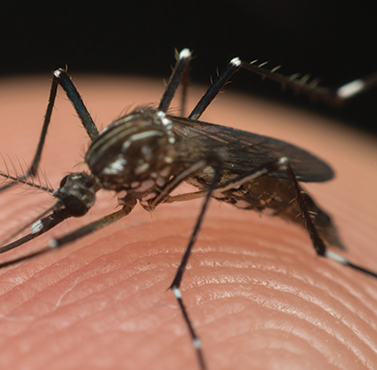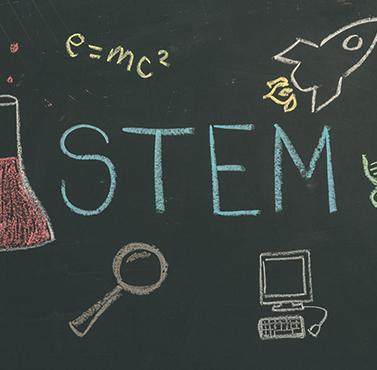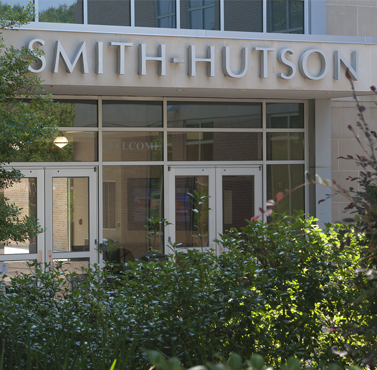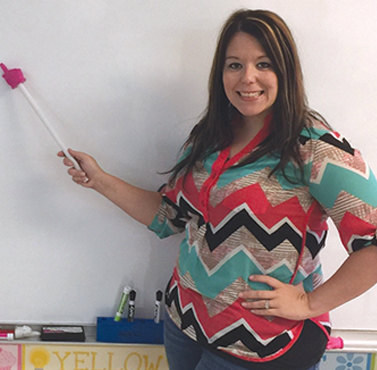Published Date: December 14, 2017
After enlisting in the U.S. Army following his graduation from SHSU’s College of Criminal Justice in 2013, Christopher Springer’s first assignment in the military was to help develop and innovate a vaccine against Zika, a mosquito-borne virus. | Details
TRIES Fellow Dives Into Innovation Marine Research
According to Philip Matich, a post-doctoral fellow at Sam Houston State University’s Texas Research Institute for Environmental Studies, very little is known about shark populations. | Details
Full Stem Ahead With National Award
A strong science, technology, engineering and mathematics (STEM) education is becoming increasingly recognized as a key driver of innovation and opportunity. | Details
COBA Wins Innovation Award
Wharton Research Data Services, SSRN and Elsevier recently recognized SHSU College of Business Administration as the winner of the first WRDS-SSRN Innovation Award™, honoring emerging business schools. | Details
Collaboration Nation For Student Success
As a part of Sam Houston State University’s undertaking to help support first-generation students and a diverse student population meet their educational goals, the university has turned to an innovative focus on collaboration with other higher education systems. | Details
SHSU Teachers Make The Grade
The preparation of effective teachers for Texas public schools is of paramount importance in assuring sound economic footing and an enhanced quality of life for all Texans. | Details
Alumnus Fights In Battle Against Zika Virus
After enlisting in the U.S. Army following his graduation from Sam Houston State University’s College of Criminal Justice in 2013, Christopher Springer’s first assignment in the military was to help develop and innovate a vaccine against Zika, a mosquito-borne virus. His work demonstrates how Bearkats are making significant contributions in the workforce today.
Springer was among 10 civilian and military personnel who were part of a team at the Walter Reed Army Institute of Research to develop the new 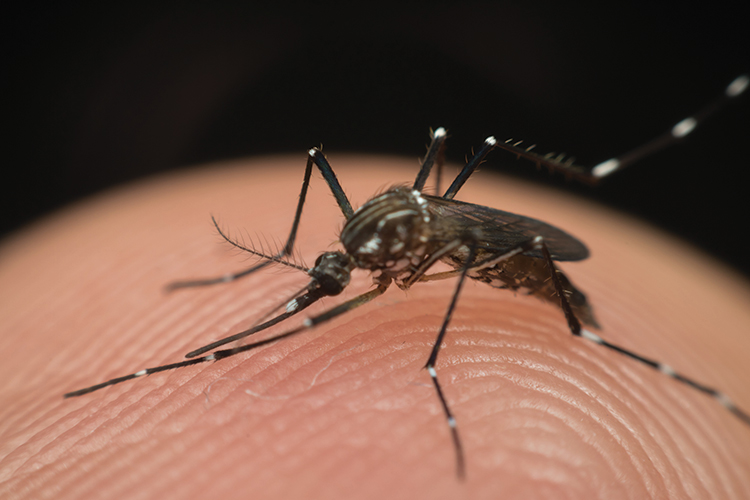 vaccine in just 200 days. Springer and his colleagues routinely handled the lab work, including conducting tests, generating reports, and keeping the facility stocked with the necessary supplies and equipment. Human trials of the vaccine began last fall and, if successful, the vaccine may be available on the commercial market within two years.
vaccine in just 200 days. Springer and his colleagues routinely handled the lab work, including conducting tests, generating reports, and keeping the facility stocked with the necessary supplies and equipment. Human trials of the vaccine began last fall and, if successful, the vaccine may be available on the commercial market within two years.
“I am proud to be a part of the team,” said Springer “I never imagined that I could go on and be a part of something so great and unique.”
According to the Centers for Disease Control and Prevention, Zika is a flavivirus similar to yellow fever, dengue and Japanese encephalitis. Spread mainly through infected mosquitoes, symptoms are generally mild with fever, skin rashes, muscle and joint pain. However, infection during pregnancy can lead to serious birth defects, such as babies born with abnormally small heads and brain disorders.
The military got involved in research after soldiers were threatened by outbreaks in North and South America and Southeast Asia. As of November 2016, there were 154 cases confirmed in the military system, including four pregnant service members and a family member.
Springer had planned to join a law enforcement agency and start a career as a homicide detective once he got his criminal justice degree. However, during his time at SHSU, Springer enrolled in a year of the ROTC program and did some prerequisites for the nursing program.
In the Army, he trained as a medical laboratory technician, earning an associate’s degree in Health Science Laboratory Technician from George Washington University and a medical laboratory technician certificate from the American Society of Clinical Pathology.
With his research and medical background, Springer was assigned to WRAIR, the largest and most diverse biomedical research laboratory operated by the Department of Defense. The mission of the facility is to protect soldiers in the military through research and advanced technology.
As part of the Center of Infectious Disease Research, Springer was responsible for several tests, including micro neutralization tests, enzyme-linked immunosorbent assay (known also as ELISA), and plaque assay, as well as observations for cythopathogenicity and avidity. He also ordered supplies, maintained the labs, and conducted viral purifications and viral filtrations.
Springer will soon transition to the Veterinary Service Program at WRAIR, which focuses on the care and enrichment of animals used in research by the military. He also is working on his packet for Officer Candidate School.
Innovation focus at SHSU includes guiding students to be the best problem solvers they can be, identifying opportunities with the potential to greatly benefit society, and being equipped with the skills to implement 21st-century ideas. Springer’s work provides an example of just how that training can lead to innovative accomplishments. – By Beth Kuhles
Back to topTRIES Fellow Dives Into Innovative Marine Research
According to Philip Matich, a post-doctoral fellow at Sam Houston State University’s Texas Research Institute for Environmental Studies, very little is known about shark populations.
“Texas Parks and Wildlife Department has a fantastic coastal monitoring program where they collect data on distribution, abundance and size of these sharks, but beyond this, there’s not really a whole lot known,” said Matich. 
With fewer than 10 papers published on shark ecology and only three other groups working on sharks in academia in the whole state, Matich conducts innovative research in an area relatively untouched.
“A lot of my work focuses on the population ecology of coastal sharks and the external and internal factors that shape their behavior and ecological roles within their ecosystems,” he said.
Matich uses sharks as ecological indicators—by looking at their diets, movements, life histories, and microbial or physiological traits—to evaluate the status of Texas coastal ecosystems and make predictions concerning management and environmental change.
“Shifts in relative abundance and size structure are occurring among some sharks in Texas,” he said. “(Maybe it’s) because salinity has changed, because fresh water flow from rivers has changed; or there is less food; or they’re not receiving the right nutrients.”
According Matich, understanding how and why sharks operate as they do is important, because sharks are good indicators for water quality and human and environmental impacts in coastal areas.
Contributing to environmental considerations on how coastal ecosystems are connected, why conservation is important, and what can be done to help protect our oceans, Matich’s work demonstrates how innovative research at SHSU can make an impact on large-scale, global concerns and solutions.
Back to topFull Stem Ahead With National Award
Astrong science, technology, engineering and mathematics (STEM) education is becoming increasingly recognized as a key driver of innovation and opportunity. Sam Houston State University understands the ever-growing need for STEM knowledge and skills in the workforce and many faculty members are making headway in new and innovative teaching methods for helping students succeed in those areas.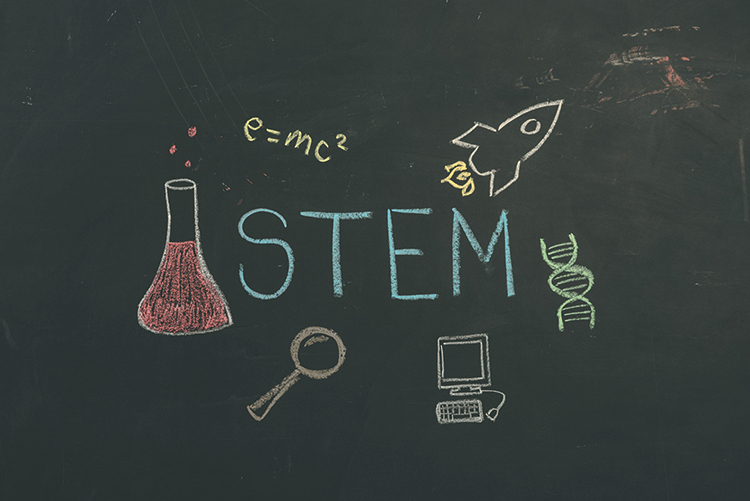
The National Science Foundation has awarded SHSU an intended total amount of more than $2 million to support the project entitled, “A Comprehensive Model for Improving the Success of STEM Majors through the STEM Center.”
The project, which the award began aiding on Sept. 1, is under the direction of Brian Loft, faculty administrative fellow. It’s objective is to increase the number of STEM graduates, as well as the quality of these graduates.
“This award is very important,” he said. “Our faculty, instructors and graduate students are always devoted to helping students learn more and learn better, but it usually takes a lot of time and resources to change the way we teach our classes.”
According to Loft, the grant will establish for the first time a STEM Center at SHSU.
“There really hasn’t been one before,” he said. “We’ve done small projects in the past, but nothing this big and comprehensive.”
In order to accomplish that goal, Loft, along with the rest of his team, Taylor Martin, assistant professor of mathematics; David Thompson, assistant professor of chemistry; Faruk Yildiz, associate professor of engineering technology; and Donna Artho, assistant vice president for institutional effectiveness, have identified three different objectives.
The first goal is to better prepare students before they start their freshman math and science classes.
“We’ve identified a set of courses that are very difficult for students, those being general chemistry I and II, pre-calculus and calculus,” Loft said. “We’re going to design what might be called a summer bridge program, freely available to students two or three weeks before classes start. Students can come in and learn math and chemistry before classes begin, along with some professional development, like study skills, notetaking and how to do well on exams. That way, they’re set up to get an A or B in those classes.”
The second goal is to implement a new way of teaching math and science classes, rather than using the traditional way.
“We’re going to educate and train our faculty to use what’s known as best practices and active learning,” he said. “There are teaching techniques that have been shown to work for science students better than traditionally taught courses, and in particular, for underprepared students. We should be using them.”
In math, for example, there won’t be a textbook, but rather a list of problems and sequences for students to solve. They will work on the solutions on their own and attend class to discuss and present the things they’ve learned outside of class.
“The job of the instructor, most of the time, is to sit in the back of the room and watch what the students present and guide the discussion,” he said. “If a student gets stuck at the board, then it’s the job of the other students to ask the right questions. If those right questions don’t come, then it’s the job of the instructor to make sure they get asked. If the presenter doesn’t do a good job of presenting to the class and the class doesn’t understand, then it’s the job of the instructor to ask the right questions for the presenter to better transmit the information to the students.”
Loft said this new style of learning is difficult for students to get used to at first, because it expects a lot from the students.
“The point of this grant is to take this teaching method and adapt it to biology, computer science, engineering technology, and chemistry,” he said. “The goal of the instructor is to have the students discover the material on their own. When you figure something out on your own, you own it, and you know it much better than if you’re just told something.”
The third goal is to provide students with resources for undergraduate research.
“We’ll get them in a lab to get hands-on experience,” he said. “Hopefully students are ready for their freshman-level classes and do well; they’re learning the material in a way that’s better than traditionally taught classes; and they have hands-on experience and are ready to get a job.”
“Sam Houston State University’s success in STEM education has been noticed and rewarded,” said U.S. Congressman Kevin Brady, the chairman of the House Ways and Means Committee. “The more than $2 million National Science Foundation award acknowledges SHSU’s commitment to undergraduate research and ongoing efforts to help students obtain the necessary tools to succeed in math, science and technology based careers.”
STEM learning is key to SHSU’s innovation focus in shaping tomorrow’s career ready students. The summer program is set to begin in the summer of 2018, and the new classes and undergraduate research program will begin in the fall of 2018. – By Lane Fortenberry
Back to topCollege of Business Administration Wins Innovation Award
Wharton Research Data Services, SSRN and Elsevier recently recognized SHSU College of Business Administration as the winner of the first WRDS-SSRN Innovation Award™, honoring emerging business schools.
This award recognizes the caliber of innovative and impact-focused research taking place at SHSU and the school’s commitment to further developing its strong business program.
“We are honored to be the recipient,” said Mitchell Muehsam, Dean of the College of Business Administration at SHSU. “We take great pride in having WRDS available for our faculty. This valuable resource has enabled our faculty to produce high quality research as well as enhance the education we provide our students. We are confident that in the years to come, we will continue to be innovative, using WRDS to provide impactful research and an engaged educational environment.”
Providing business intelligence, data analytics, and financial research, WRDS is the global gold standard in data management and research, utilized by over 50,000 commercial, academic, and government users in 30+ countries.
Back to topCollaboration Nation for Student Success
As a part of Sam Houston State University’s undertaking to help support first-generation students and a diverse student population meet their educational goals, the university has turned to an innovative focus on collaboration with other higher education systems.
SHSU is among 31 institutions and support partners across the nation selected to participate in an initiative funded by the Bill & Melinda Gates Foundation to identify strategies for improving graduation rates, especially for low-income, first-generation and minority students.
“The Frontier Set” brings together state-assisted universities, Historically Black Colleges and Universities, Association of Public and Land-grant Universities’ Coalition of Urban Serving Universities, and University Innovation Alliance members.
SHSU is one of six members of the American Association of State Colleges and Universities (AASCU) invited to join the Frontier Set effort. The other five include the College of Staten Island in New York, New Jersey City University, Northern Arizona University, the University of Texas Rio Grande Valley, and the University of North Carolina Greensboro.
AASCU has identified SHSU as a high-potential regional comprehensive member institution that is already integrating evidence-based solutions and showing significant improvement in credentialing productivity.
Brian Loft, chair of the Department of Mathematics and Statistics, is the site team coordinator and principal investigator for the $640,000 grant, which will be disbursed over four years.
“We will use funding to hire faculty and staff that will support the collection of data about our students, which will then be analyzed, along with information submitted by other universities participating in the project, to determine best practices to facilitate student success,” Loft said.
SHSU will also use the funds to create a computer lab to help students achieve success in the developmental math program.
“The project will allow us to accelerate our own institutional improvement work, as well as work with other universities to build relationships, discuss our findings, and share those methods and practices that are proven to contribute to academic progress,” he said.
The Frontier Set team consists of members across several parts of campus, from advising to teaching to online course development. Others from SHSU who will be integral to the project are: Mary Robbins, Dick Eglsaer, Bill Angrove, Nancy Baker, Ann Theodori, Xiaohong Li, Susanna Shupp, Mary Lou Shelton, Ruth Chisum, and Megan St. Vigne.
In recent years, SHSU has been nationally recognized as one of the top public institutions in the nation in which minority graduation rates equal or exceed the rate of white students. The university’s “Establishing Leadership In and Through Education” program has been recognized for two consecutive years in Excelencia in Education’s “What Works for Latino Student Success in Higher Education,” America’s largest inventory of proven practices for accelerating degree completion among Latinos.
With 50 percent of SHSU’s student enrollment comprised of first-generation students and 60 percent classified as “at risk,” it is clear that education solutions today must be designed to identify and close opportunity gaps for students. This new collaborative project provides a better understanding of SHSU’s innovative focus in shaping the future workforce and developing new paths for all students to succeed. – By Julia May
Back to topSHSU Teachers Make The Grade
The preparation of effective teachers for Texas public schools is of paramount importance in assuring sound economic footing and an enhanced quality of life for all Texans. To this end, university-based teacher preparation is of great public significance in the state and worthy of careful attention. Through innovative teaching techniques and experiences, Sam Houston State University’s College of Education is making significant strides in preparing students for the workforce and the success of the college has been recognized on a state level.
According to “Performance Analysis for Colleges of Education,” a report by the Center for Research Evaluation and Advancement of Teacher 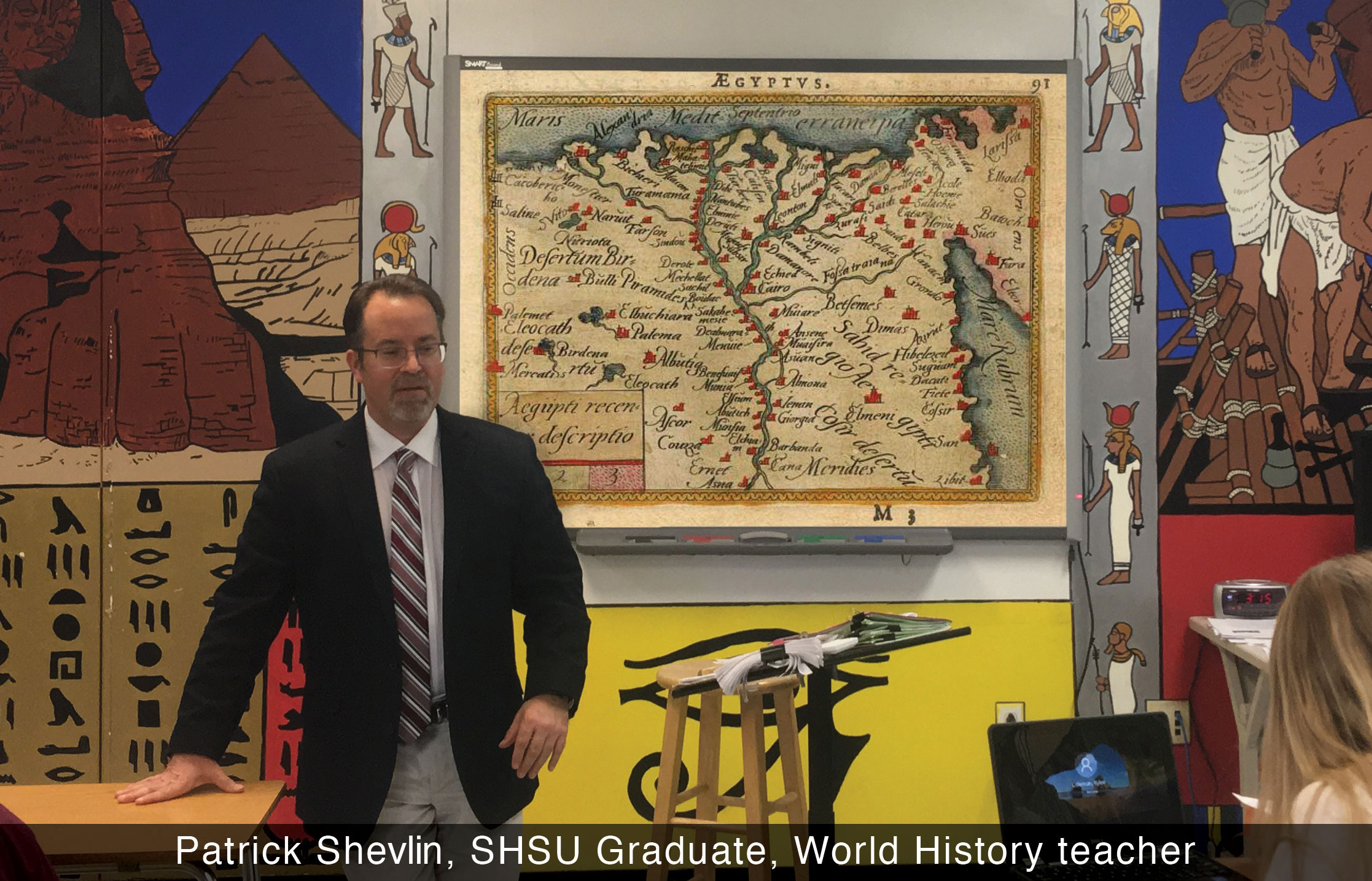 Education (CREATE), Sam Houston State’s teacher retention rate from 2012-2016 is 87.7 percent, compared to the state’s 72.5 percent.
Education (CREATE), Sam Houston State’s teacher retention rate from 2012-2016 is 87.7 percent, compared to the state’s 72.5 percent.
SHSU was tracked along with CREATE public universities, CREATE private universities, for-profit Alternative Certification Programs (ACPs) and non-profit ACPs.
“I really think that teachers staying in the field indicates quality,” said Christina Ellis, director of Accreditation and Accountability Services at SHSU. “We definitely want teachers in classrooms that want to be there. At Sam Houston State, we produce teachers who care about kids and love doing what they’re doing.”
There are multiple factors that play into teachers deciding to stay in the profession or seek out other career options, according to Ellis.
“If they get into the classroom and don’t feel prepared, they’re unlikely to stay there,” she said. “But, if they get in and they feel confident in what they’re doing then they’re likely to stay in the profession. I think that’s why you see retention in alternatively prepared teachers lower than teachers from universities. If they get into a classroom and sometimes feel underprepared within the first couple of years, they find another career path.”
Having a program that offers a wide range of teaching experiences helps prepare future teachers for varied career environments and keeps those teachers in the profession, according to Ellis.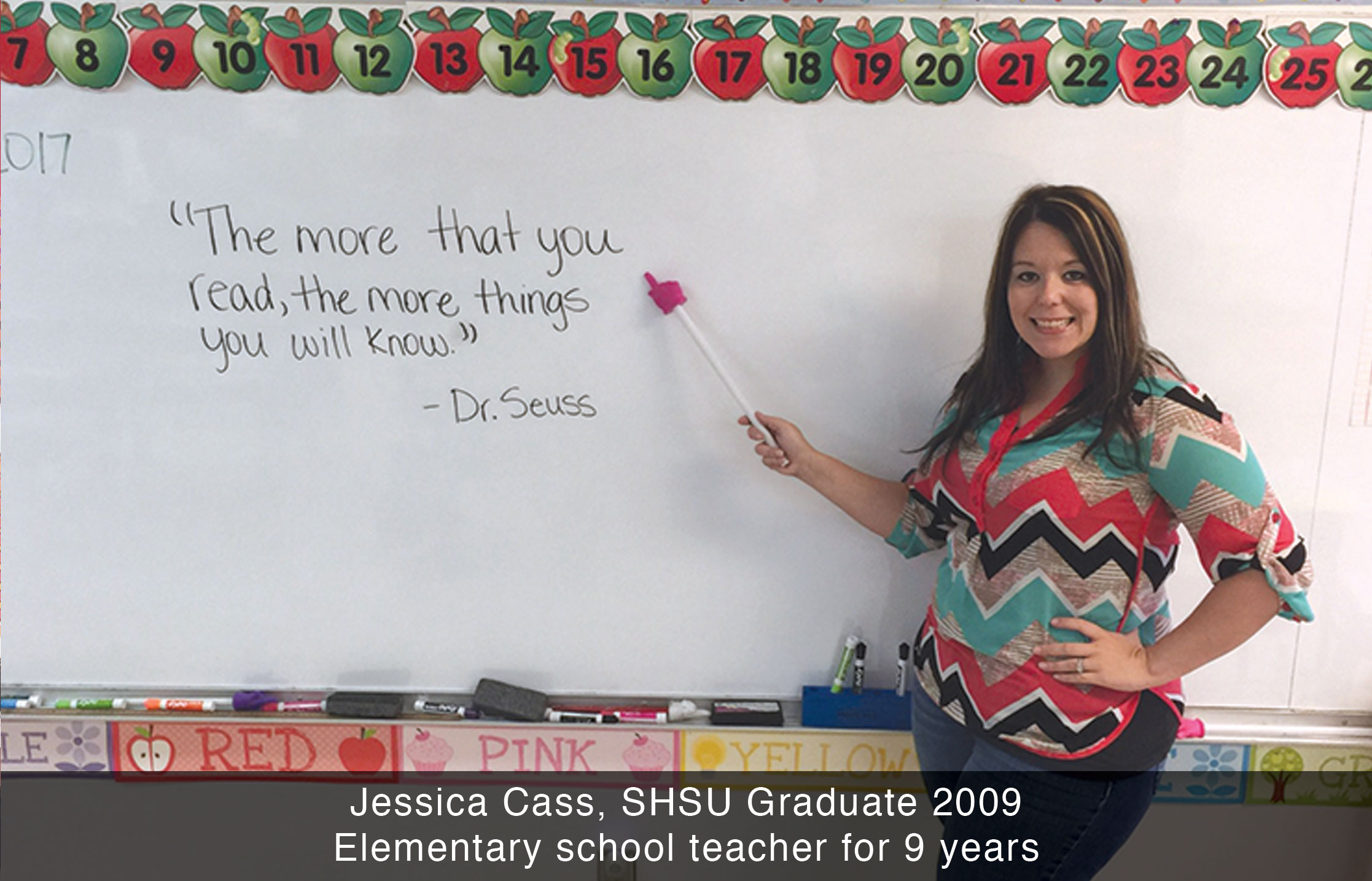
“Students have a range of experiences that start as early as the second semester of their sophomore year in the field,” she said. “When they choose to teach in a high-needs school, they know what that looks like and are prepared when they get there. We really focus on making sure our students are prepared for whichever schools they select.”
While Conroe ISD hired 37 SHSU teachers in 2015-2016, Houston ISD, the closest urban district to SHSU, only hired 14. The program is working to get student teachers more experience in urban settings like Houston earlier in their careers so they feel more prepared and connected to the school district. This range in a student’s learning experience is imperative in helping them in the workforce.
“Typically, when students have field experiences in a district, including student teaching, they tend to go and work there,” she said. “Houston is very interested in getting more of our student teachers and field experiences so students are excited about teaching there. I think a lot of our students don’t know the amazing experiences they can have in urban settings,” she said.
SHSU’s large and well-recognized elementary program is considered one of the top producers of elementary teachers in the state. A higher number of SHSU teachers became elementary school teachers (122) and held a higher retention rate (89.3 percent) than high school, 75 teachers with an 82.7 percent retention rate.
According to Ellis, the middle school and high school programs are where they typically see more alternatively certified teachers because of the misperception that teaching middle school and high school is based on simply knowing the subject areas you want to teach.
“For example, some might think, ‘if I want to be a math high school teacher, then all I really need to know is math,’” she said. “I think that hurts them in the long run because they could have majored with us in their teaching area and gotten a minor in secondary education and had a richer experience than getting alternatively certified.”
Another factor is SHSU’s teacher success is the diversity of their graduate population. For example, the number of SHSU African American certified teachers has increased by 86 percent in five years.
“We believe that students need to see teachers that look like them,” she said. “They need to have relationships with teachers in which they can see themselves, so it’s really important to us to have a diverse teacher population. We’ve really worked to recruit students of color and students from economically challenged backgrounds so that we’re preparing teachers that more closely mirror the students they’re serving.”
The high teacher retention rates from SHSU education graduates are an indication that Sam Houston has a strong program that provides students with the necessary skills to succeed in the work force. Often that success includes educational leadership opportunities as well.
“What these numbers don’t show is that we have this 87 percent still teaching over the five years, but a significant portion of those 13 percent have gone on to become other educational professionals like principals, counselors or librarians,” she said.
“We produce great teachers who love kids,” she said. “We are the premiere teaching program in the state and have a great reputation, and I don’t think that’s by accident. We have students that really love what they’re doing and intend to make a career out of education.”

